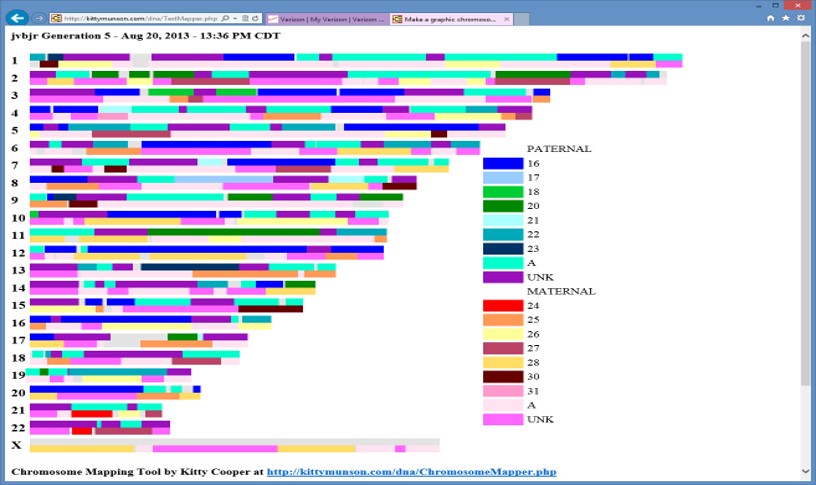A Segment-ology TIDBIT
There are several key elements of good genetic genealogy – I’m going to call them Gold Stars.
1. DNA Match – as designated by the testing companies and GEDmatch. Most of these are our genetic cousins. I have a lot of them (over 120,000); and they are a good subset to work with. Worth a Star.
2. IBD Segment – We generally assume that virtually all Matches above 15cM have true genetic links; and my analysis is that about 66% of those 8 to 15cM are also true. Granted, some of the under-20cM Matches will be beyond a genealogy time frame (about 9 generations for me), IBD gets a Star.
3. Common Ancestor – This is a primary goal of genetic genealogy – finding a Common Ancestor with each Match. Notes: some Matches will have multiple CAs within a genealogy timeframe; just finding a CA does NOT necessarily mean that the Shared DNA segment came from that CA; a Match may share multiple DNA segments, and possibly multiple CAs. So finding a CA is worth a Star.
4. ThruLines (and Theory of Family Relativity) – I’ve found these to be over 90% correct. If you agree with them – add a Gold Star.
5. Same side – Ancestry and FamilyTreeDNA now indicate the “side” that each of our Matches is probably on. So far, I think this process is pretty accurate. The Common Ancestor should agree with the “side” for a Gold Star. If there is not agreement with the side, there may an additional Common Ancestor with the Match (on the same “side”]; or the “side” may be incorrect.
6. Paper Trail – each Common Ancestor should be supported by good genealogy paper trail of solid records. Not always possible; but add a Gold Star if you can document your and your Match’s paper trails.
7. Segment Triangulation – indicates your DNA segment is an IBD (true) shared segment; and probably the Matches’ segments are too. A Gold Star.
8. Shared Matches – [aka In Common With; Relatives in Common]. If most of the Shared Matches are in agreement, add a Gold Star.
9. Clustering – tends to group DNA Matches on an Ancestor. If the consensus of Matches in a Cluster is an Ancestor (or even 2 or 3 in an Ancestral line), add a Gold Star.
10. Reasonable Tree – does the Match with a Common Ancestor have a reasonable Tree? If a Match has a Tree with just one descendant (the Match’s Ancestor), that is a warning signal [NO Gold Star]. If a Match has a Tree with way too many children, given names repeated, different children with same birthdate – this is probably a research Tree with a collection every possible child – sometime born at many different locations – warning-warning! This is very flimsy evidence (NO Gold Star]. However, if the Match’s Ancestral line shows a reasonable number of children, spaced 1 to 3 years apart, that is a good sign. Alignment with census records is a plus. Use judgment to claim a Gold Star.
Ideally, we’d have 10 Stars for each Match – but, that ain’t gonna happen very often… And I probably won’t be adding a Star # in my Notes. But I do review most of these when I accept a Match with a Common Ancestor. I just thought I’d share my compilation of thoughts when I find a CA.
This may be an imperfect list, but I hope it is helpful. Improvements/suggestions are welcomed in the comments. This Gold Star concept is not a set of hard rules – it’s intended to be helpful ideas. Your judgment should be the final say for your genealogy.
Note for genealogists – our genetic cousins are a small fraction of all our true cousins. I often add individuals to my Tree who are not DNA Matches.
[22CD] Segment-ology: Gold Stars TIDBIT by Jim Bartlett 20231229


